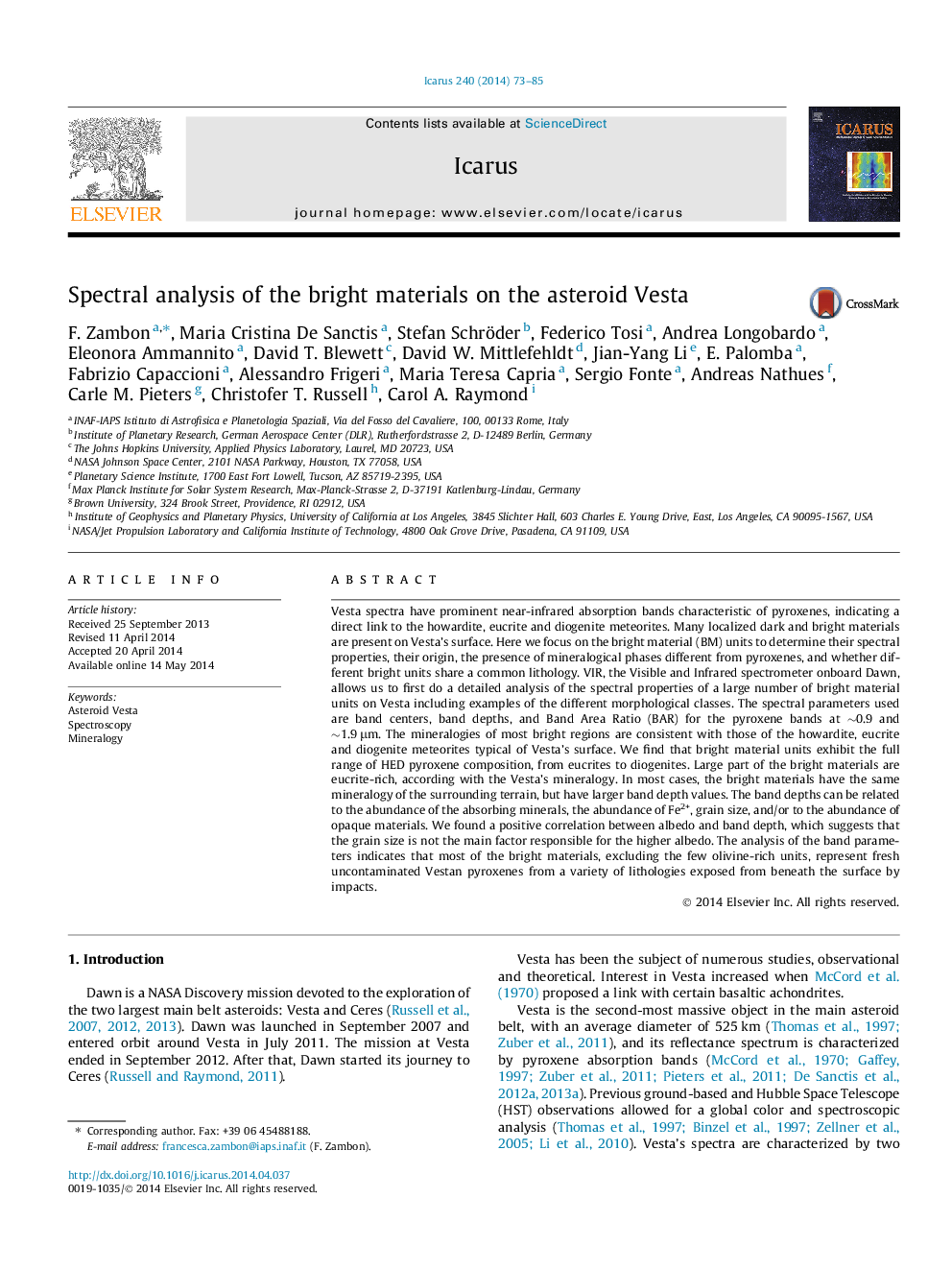| Article ID | Journal | Published Year | Pages | File Type |
|---|---|---|---|---|
| 1773067 | Icarus | 2014 | 13 Pages |
•We analyzed 75 bright material (BM) units to infer their mineralogy.•Most of the BM units have a mineralogy similar to the surrounding terrains.•BM units generally have deeper absorption bands than the regions surrounding them.•The band depths of the BM units are correlate with the albedo.•Some BM units have different characteristics respect to the other BM units.
Vesta spectra have prominent near-infrared absorption bands characteristic of pyroxenes, indicating a direct link to the howardite, eucrite and diogenite meteorites. Many localized dark and bright materials are present on Vesta’s surface. Here we focus on the bright material (BM) units to determine their spectral properties, their origin, the presence of mineralogical phases different from pyroxenes, and whether different bright units share a common lithology. VIR, the Visible and Infrared spectrometer onboard Dawn, allows us to first do a detailed analysis of the spectral properties of a large number of bright material units on Vesta including examples of the different morphological classes. The spectral parameters used are band centers, band depths, and Band Area Ratio (BAR) for the pyroxene bands at ∼0.9 and ∼1.9 μm. The mineralogies of most bright regions are consistent with those of the howardite, eucrite and diogenite meteorites typical of Vesta’s surface. We find that bright material units exhibit the full range of HED pyroxene composition, from eucrites to diogenites. Large part of the bright materials are eucrite-rich, according with the Vesta’s mineralogy. In most cases, the bright materials have the same mineralogy of the surrounding terrain, but have larger band depth values. The band depths can be related to the abundance of the absorbing minerals, the abundance of Fe2+, grain size, and/or to the abundance of opaque materials. We found a positive correlation between albedo and band depth, which suggests that the grain size is not the main factor responsible for the higher albedo. The analysis of the band parameters indicates that most of the bright materials, excluding the few olivine-rich units, represent fresh uncontaminated Vestan pyroxenes from a variety of lithologies exposed from beneath the surface by impacts.
